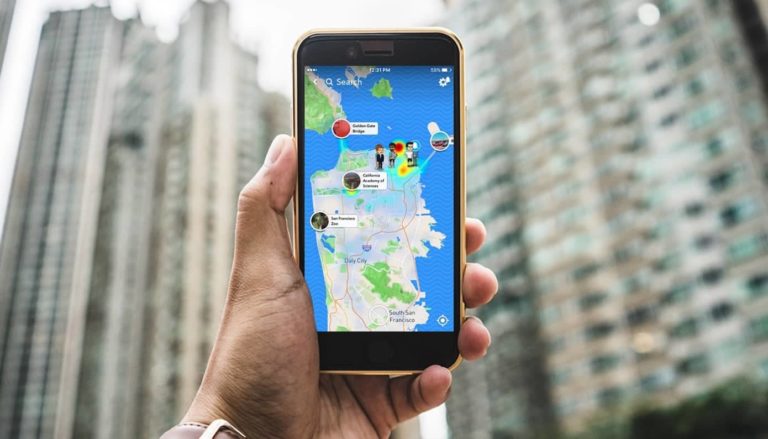
The future of the metaverse is still unclear, but the real-world benefits for brands are beginning to come into focus. Brands in every vertical are now using metaverse platforms to generate awareness and build loyalty through hyper-personalized marketing and other engagement tactics.
Nike’s first collection of shoes for the metaverse sold for more than $100,000 a pair, and pop stars like Ariana Grande and Travis Scott are pulling in millions by performing in virtual concerts. With the potential to generate as much as $5 trillion in value by 2030, the metaverse presents an important opportunity for multi-location companies and brand marketers alike.
Brands on the cutting edge are poised to see the biggest gains, but it’s not too late for others to jump in, as the virtual world is still taking shape. Here are six real-world metaverse benefits for multi-location brands looking to get involved.
1. Providing Greater Access to Physical Goods
How far will a customer travel to try-on an item or test out a product in your retail store? Consumer psychology tells us the more expensive the purchase, the more likely it is that consumers will want to see the product in person. For a multi-location retailer without a national footprint, this presents a real problem. The solution? Technologies like virtual reality, augmented reality, and 3D experiences are omnipresent in the metaverse. Consumers in every corner of the planet will soon be able to experience products virtually, without stepping foot inside physical stores.
2. Hyper-Personalization Without Data
The metaverse gives marketers a way to deliver hyper-personalization without relying on third-party data. Whereas data on the traditional web is stored on the hosts’ servers or networks, data in the metaverse is stored on the blockchain. This means virtual experiences in the metaverse can be set up based on individual behaviors, without running into privacy regulations or limitations. With the right technology, brands can reimagine their data collection practices and track customer activity in real-time. What people are buying, what they’re doing, where they are, and what device they are using are all up for grabs. This allows brands to respond to individual users, and also to build smarter user personas to deliver content that consumers will actually want to consume.
3. Opportunities to Be Genuine and Helpful
Marketing is about serving, not just selling. The metaverse provides brand marketers with new opportunities to be authentic and helpful to their audiences. Reebok’s augmented reality tool, designed to help kids create makeshift basketball courts using the environment around them, is one example of this. As with nearly everything else in the metaverse, the sky’s the limit on the types of experiences brands can implement. Marketers will soon have the freedom to create wholly unique, original experiences that are hyper-personalized and genuinely helpful, to gain the most traction and provide the greatest benefit to customers.
4. Developing Communities Around Digital Goods
In the future, your best-selling items might be virtual goods. Luxury retail brands like Gucci and Prada have become pioneers in selling virtual clothing and NFTs. Coca-Cola launched its own NFT collection in 2021, bringing in more than half a million dollars for an NFT in an online auction. Multi-location brands have the opportunity to sell virtual products and NFTs that customers can’t access anywhere else, using exclusivity to their advantage. In the coming years, it’s expected that many virtual products will surpass physical goods in price, as consumers vye for bragging rights in the metaverse.
5. Increasing Consumer Loyalty
People shop at the businesses they trust, and they generally trust the businesses they frequent. The metaverse economy presents an opportunity for multi-location brands to promote their products and strengthen customer loyalty by building out new virtual spaces and otherworldly experiences. It’s not just about capturing customer attention in the metaverse, but rather finding ways to capture the imagination of existing customers and bringing those customers back into stores — either physical or virtual. Retailers are already creating exclusive marketplaces and virtual clubhouses for members of their loyalty programs, and they’re tracking the results of those efforts looking for evidence of conversions and engagement.
6. Building Brand Recognition
Building brand awareness and name recognition is about advertising in all the right places. The metaverse opens up an entirely new world to advertisers interested in building name recognition through a combination of places, sounds, and images. Multiplayer video games are already providing savvy marketers with creative ways to place their logos into new environments. When creative virtual experiences are sprinkled into different contexts—like Wendy’s decision to integrate its logo and other brand advertising into the popular Fortnite video game—it leaves an unforgettable impression on consumers’ minds. On the whole, the metaverse is providing marketers with an endless array of potential opportunities to generate awareness for their brands.
 Stephanie Miles is a senior editor at Street Fight. A version of this article previously appeared in Street Fight, reproduced here under an editorial partnership.
Stephanie Miles is a senior editor at Street Fight. A version of this article previously appeared in Street Fight, reproduced here under an editorial partnership.

